The only work by the Vercelli painter Giovanni Antonio Bazzi (Vercelli, 1477 - Siena, 1549), known as Sodoma, still present in his hometown is a Holy Family with Angel and St. John preserved at the Borgogna Museum, thanks to the purchase of the painting by the museum’s founder, the lawyer and collector Antonio Borgogna. The latter in fact bought the work in 1895 in Milan at an auction of the collection of Antonio Scarpa, a doctor and collector from Motta di Livenza (Treviso), for the sum of just over 11,000 liras. It was from that year, therefore, that Vercelli possessed a pictorial testimony of its most illustrious sixteenth-century artist: before that time, in fact, his hometown was totally lacking. Although born in Vercelli, Sodoma attended here only the workshop of the painter Giovanni Martino Spanzotti (Varese, c. 1455 - Chivasso, ante 1528), but then at a very young age he moved away to move first to Milan, where he came into contact with the Leonardo painters, and later to Siena, starting around 1501, which was considered his adopted city.
According to local documentary sources, which are analyzed in the booklet Giovanni Antonio Bazzi known as Sodoma. Documentary and Literary Sources written by Roberto Bartalini and Alessia Zombardo, several family nuclei originally from Biandrate had settled in Vercelli all sharing the surname de’ Bazzi and the activity of shoemakers. Also belonging to one of these families was Giacomo di Antonio Bazzi da Biandrate, also a shoemaker, who in 1475 rented a workshop with a house in Vercelli in which to practice his profession; he was united in marriage the following year with Angelina di Niccolò, and from their union three children were born: Giovanni Antonio, Nicola and Amedea. Giovanni Antonio’s last presence in Vercelli is attested in his father’s will, at a time when his son was about to finish his apprenticeship with Giovanni Martino Spanzotti. It is known with certainty that as early as December 1501 Giovanni Antonio was absent from the city because his mother, who had become a widow, entered into an agreement with her son Nicola whereby thirty Milanese florins derived from the sale of a piece of cultivated land, intended for her son’s maintenance, were to be returned to her in the event that Nicola took over the portion of the inheritance of his brother Giovanni Antonio, who was absent from his hometown.
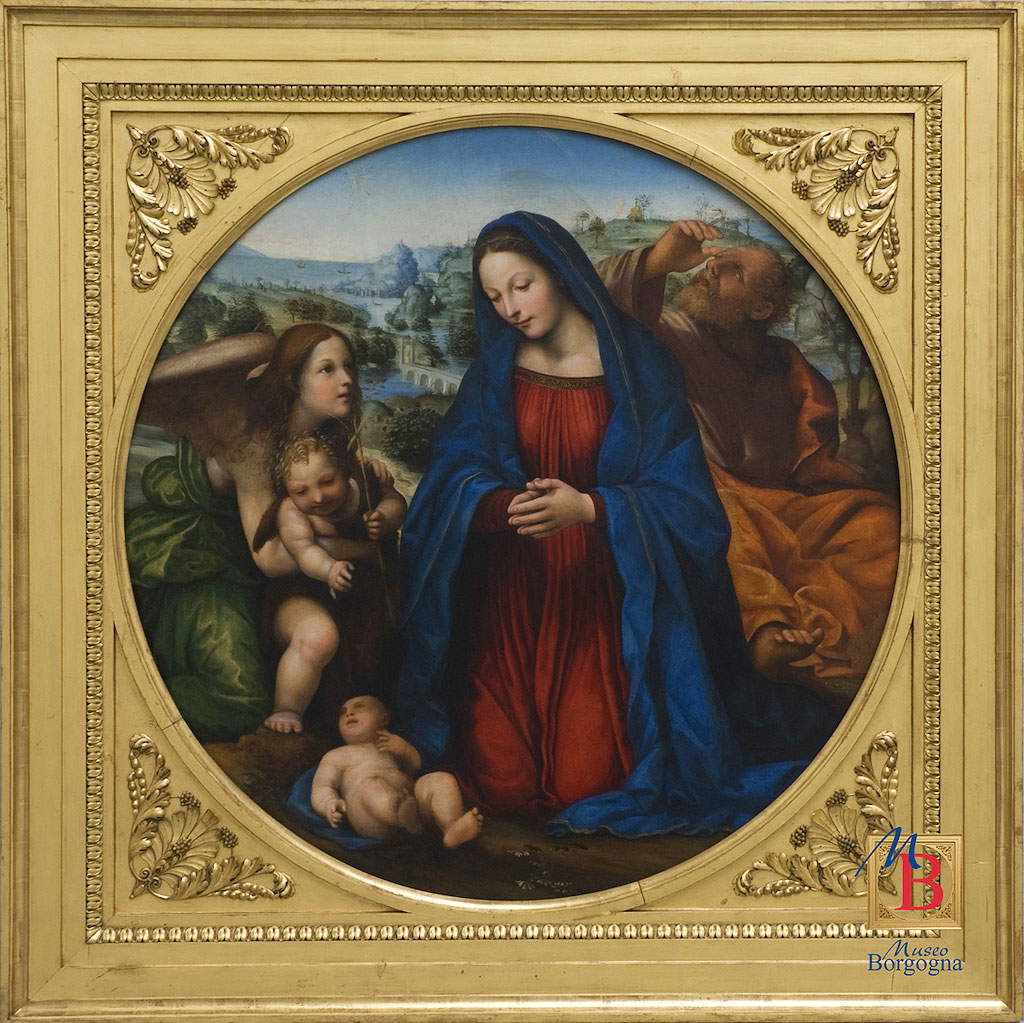
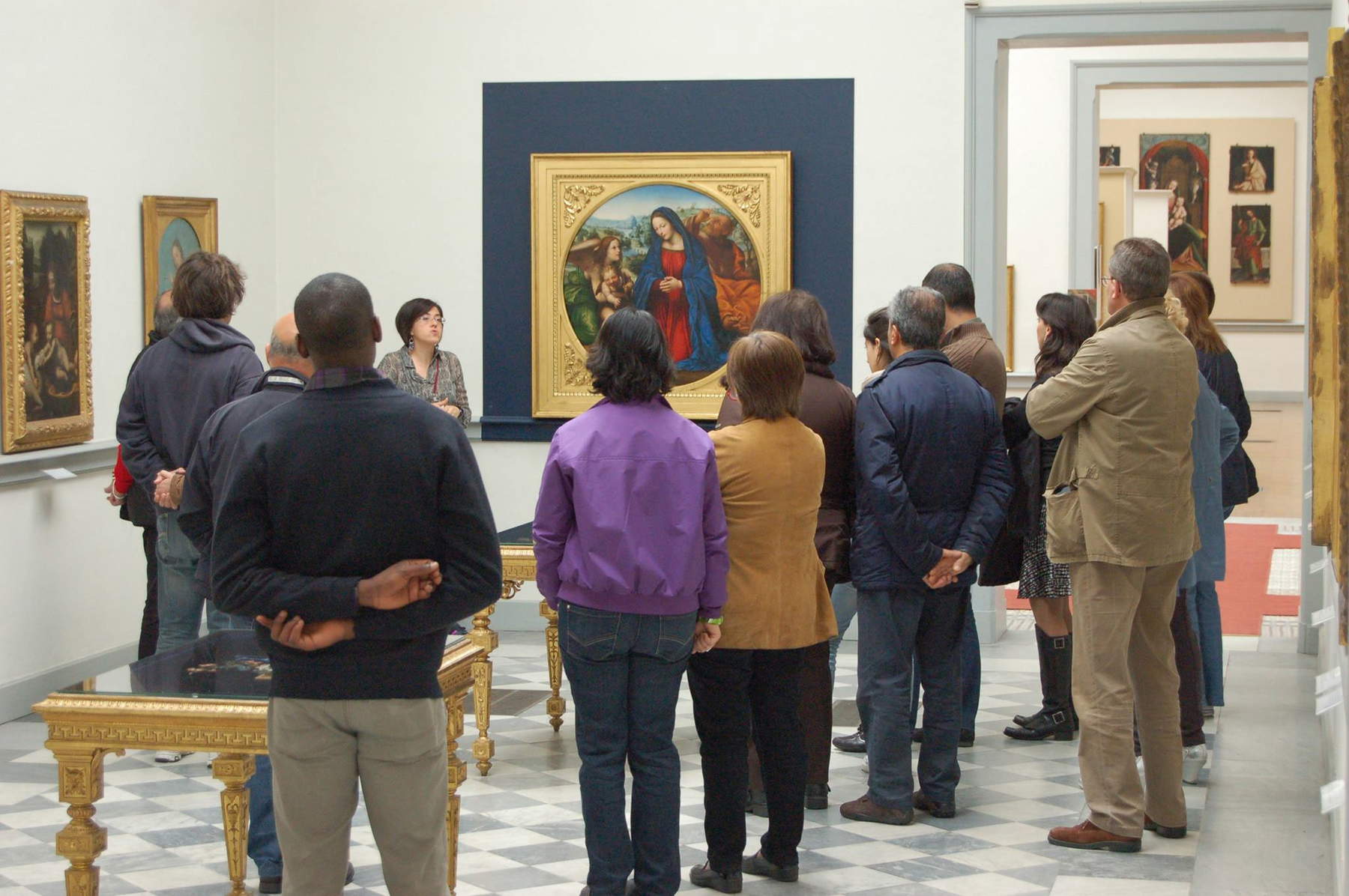
At the time of Borgogna’s purchase of the painting, the auction catalog still attributed the work to the painter Cesare da Sesto (Sesto Calende, 1477 - Milan, 1523), trained by Leonardo; it was later art historian Giovanni Morelli and critic Gustavo Frizzoni who recognized its authorship to Sodoma. Frizzoni, who was present at the auction and authored an account of the latter, praised the collector for having brought to Vercelli a work (and still the only one) by Giovanni Antonio Bazzi, and also because it was the one that, in his opinion, “attracted the most, and not unjustly, the public’s sympathies.” In fact, the purchase constituted the recovery of a city glory with an artist considered among the most prominent exponents of Piedmontese origin: until the mid-19th century it had been believed that Sodoma was born in Verzelle, near Siena, but finally it was Father Luigi Bruzza who in 1862 identified the painter’s birth certificate among municipal archival documents and defined with all certainty the exact city of origin, namely Vercelli.
On May 3, 1896, an article by the Vercellian colonel and scholar Cesare Faccio, entitled A proposito del Bazzi e di una sua pittura (About Bazzi and one of his paintings), was published in the local newspaper La Sesia , thus testifying to the entry of the Sodoma painting into the rooms of the Borgogna Museum; Faccio is also credited with the news of the purchase, the commemoration in 1907 of the collector Antonio Borgogna, and the publication in 1902 of a monograph on the artist consisting of a foreword and five chapters concerning his life and works divided into three periods entitled Giovan Antonio Bazzi vercellese pittore del secolo XVI.
The city’s glory and new rediscovery for Sodoma is also evidenced by several celebratory busts made on Antonio Borgogna’s commission in marble and bronze: he commissioned the sculptor and lecturer at the Institute of Fine Arts, of which the collector was a member, Francesco Porzio, to make them. A bust of the “Sodom” given to the City Hall, so titled the article published in La Sesia in December 1895: in the very central Piazza Cavour the marble sculpture still stands, while the bronze replica “from the marble model placed in the niche of the civic building facing the Railway Station Street,” which until 1906 was in the library of Borgogna’s house, is present in two specimens in the Gipsoteca of the Institute of Fine Arts.
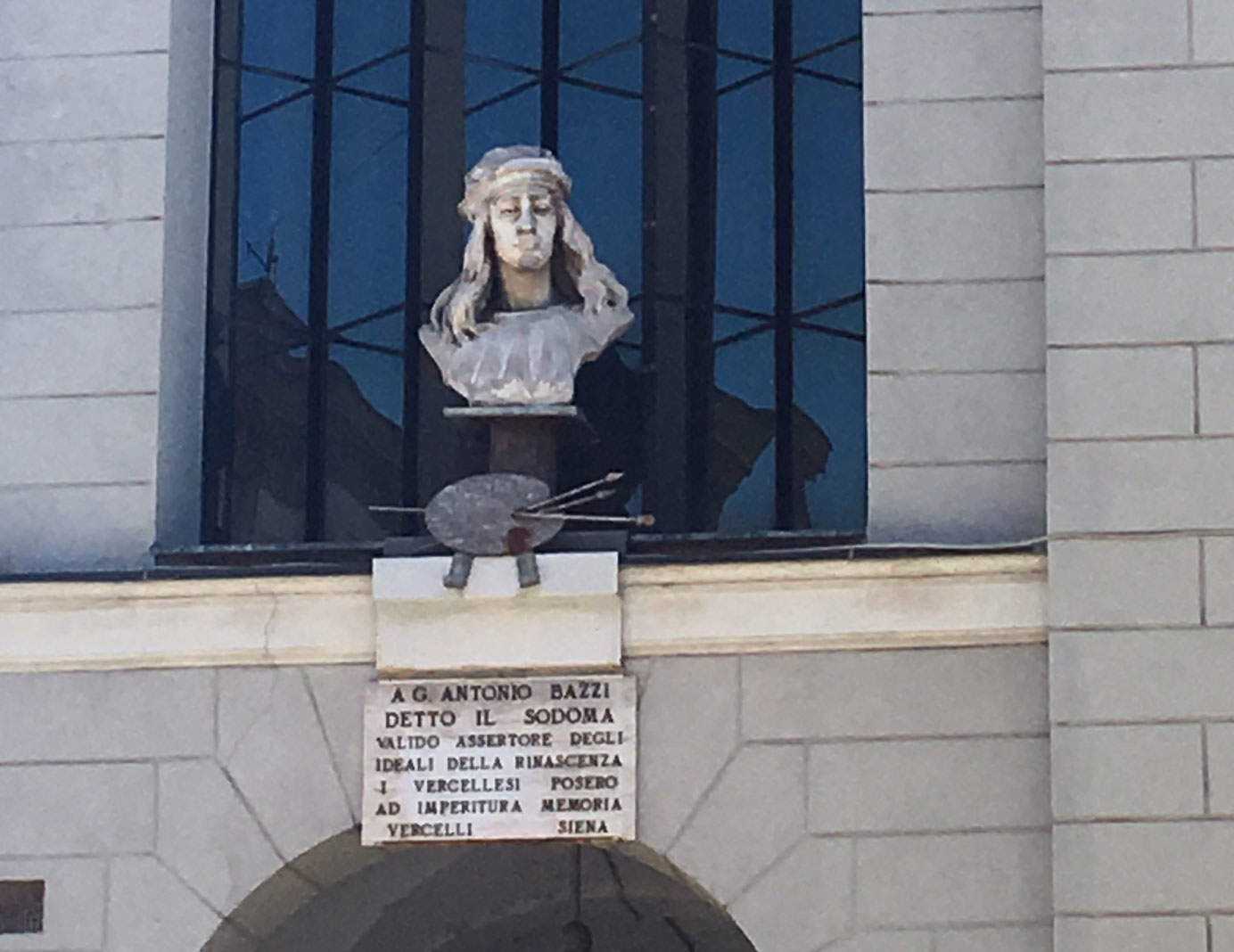
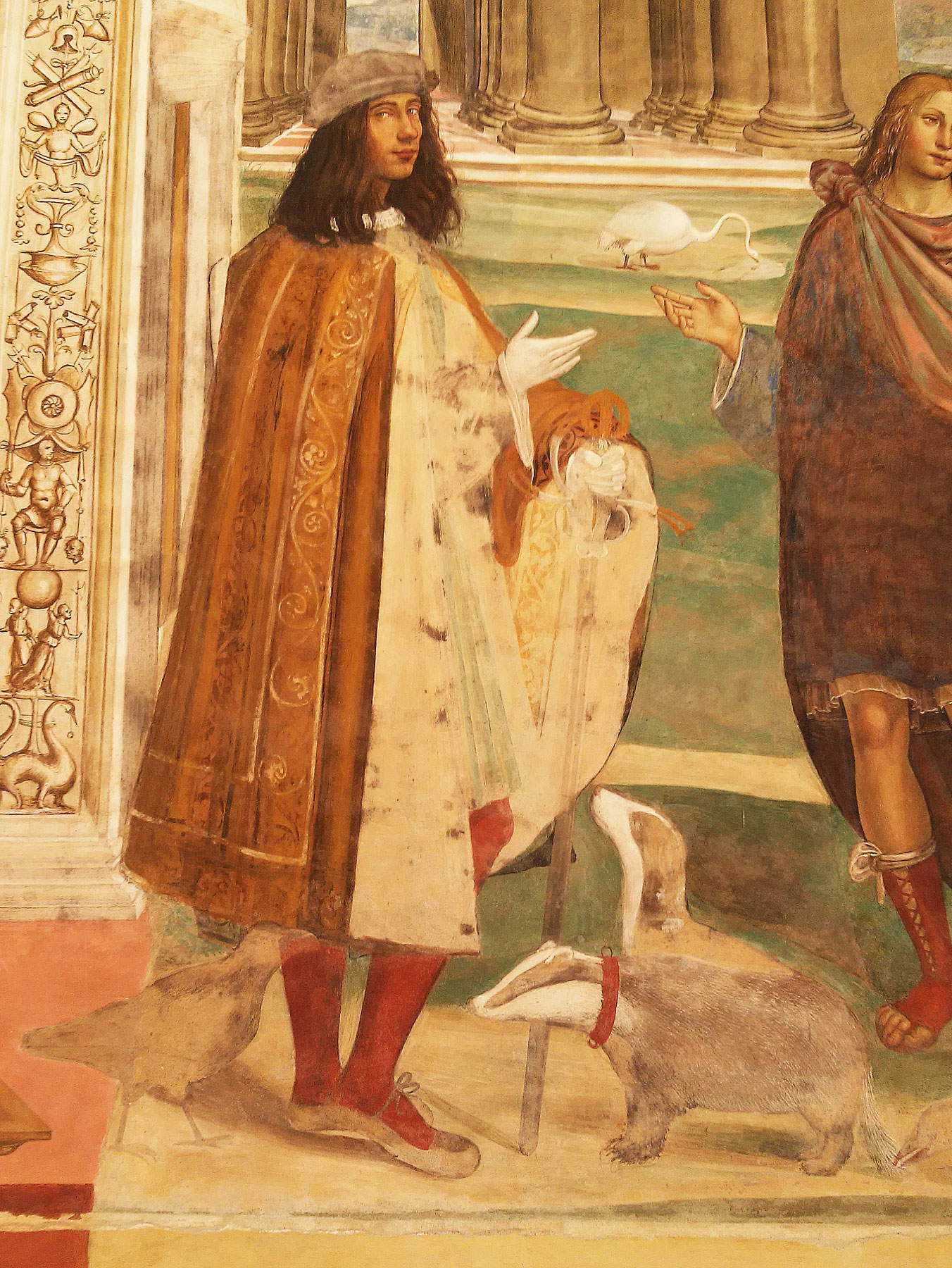
The Municipality of Vercelli had dedicated “an out-of-the-way alley” to the painter’s memory, and placing a celebratory marble bust at the entrance to the main square made “many fellow citizens of all classes” quite controversial because Bazzi’s name created in them the effect “made on Don Abbondio by the name of Carneade fallen from the lips of Cardinal Federico Borromeo.” In the face of this, Cesare Faccio was commissioned as a “scholar of things Vercellese” to write a series of serial articles to be published in La Sesia “to satisfy the curiosity of knowing some thing about him.” Subsequently, at the suggestion of Borgogna, the notary and collector Camillo Leone and Count Federico Arborio Mella, director of the Institute of Fine Arts, the articles published in the local newspaper were brought together in a volume that Faccio himself commented on with these words, “however incomplete and ineffective our work may have succeeded, it is still sufficient to show what a great painter, however not always equal to himself, Sodoma was. And this other thing we firmly believe: that is, to have demonstrated that this very great artist must be considered as the most resplendent luminary of that Vercelli school of painting, which occupies in the great art of the fifteenth and sixteenth centuries honorable place, in that illustrious page of the history of art, which is to be distinguished by the collective name of the Lombard school.”
The Holy Family with Angel and Little Saint John is still one of the most important masterpieces in the Vercelli museum. The composition hints at the mature phase of Sodoma’s painting production , around 1510-1520, that is, when he returned to Siena after finishing the frescoes in the cloister of the monastery of Monteoliveto Maggiore begun by Luca Signorelli in the late 15th century and after learning about Raphael’s painting in Rome.
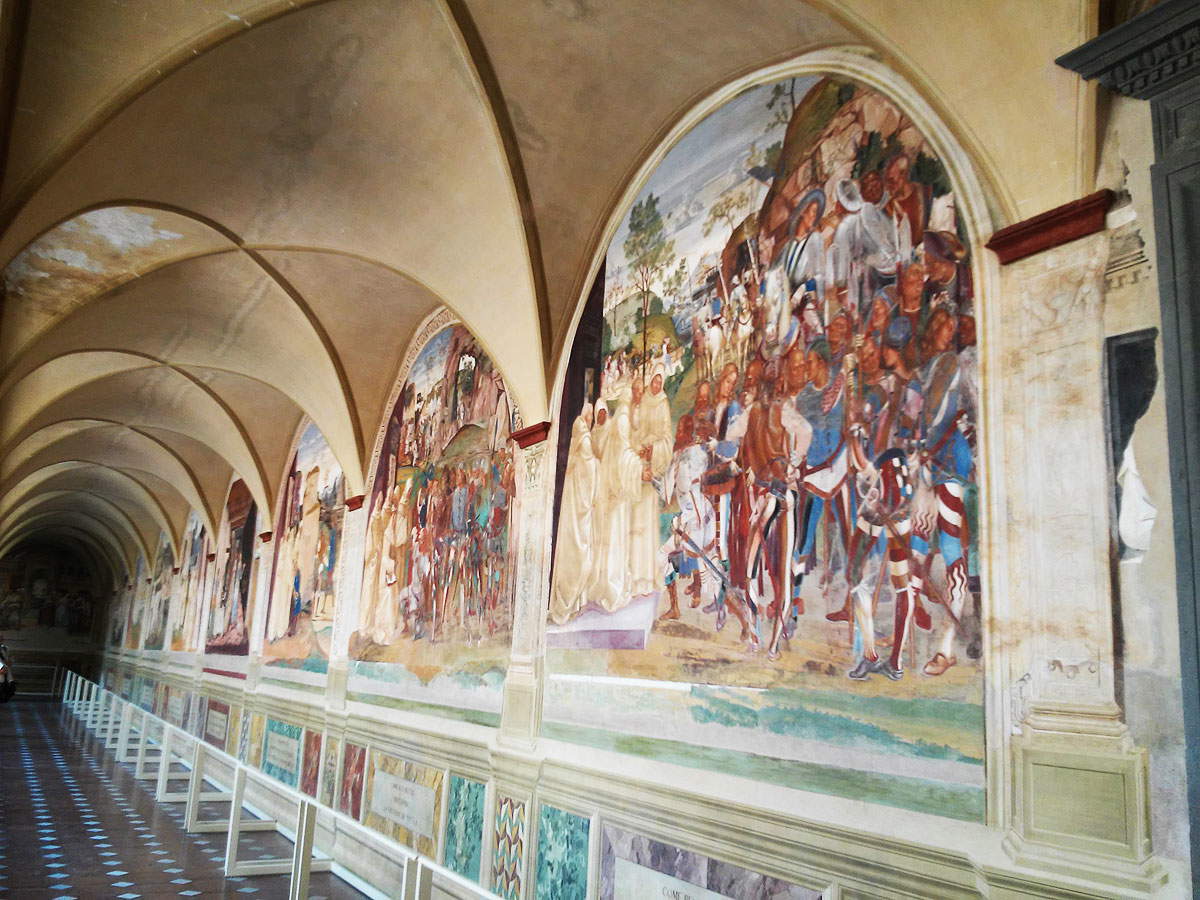
In the center of the scene is the Madonna kneeling on the ground: she holds her hands together and wears a red robe with a wide blue cloak that descends from her head until it covers her shoulders and folds over the ground. On a flap of fabric of the cloak lies the naked Child who, with a little finger with which he touches his cheek, looks at the chubby little Saint John, the latter in the arms of a winged angel to the Virgin’s right. The two children in fact look at each other: the former upward, the latter leaning downward. The painting is built on a play of gazes: in addition to the two children, the Madonna gently and maternally observes her son, sketching a tender smile, while the angel with the soft green robe and rosy wings turns his gaze toward the Virgin. To the latter’s left, on the other hand, is Saint Joseph, who, with one foot raised and one hand brought close to his forehead, turns his head upward, interrupting the circular sense of gazes between the other figures depicted. Indeed, it seems that the man is disconnected from the other figures to see something outside the scene that surprises him.
Particularly noticeable is the beautiful landscape in the background, with trees, plants and even a bridge over a river: this is undoubtedly a reminder of Leonardo’s paintings, with whom Sodoma came into contact in about 1498, when he moved to Milan, as well as the painting of Leonardo himself, an absolute master in rendering nature and landscape on canvas as living, tangible elements. Also reminiscent of Leonardo’s painting is the sfumato with which Sodom renders the skin, and particularly the faces, of the characters: he is thus able to give depth and luminosity to the figures depicted here, so much so that they seem alive, as if they were emitting a breath.
Sodoma’s Sacred Family has in it delicacy, originality, attention to detail, celebration of the masters: elements that make Giovanni Antonio Bazzi one of the most significant exponents of the sixteenth-century scene in northern Italy, who can be “forgiven” for his “life as an eccentric artist,” as Vasari called him, which in the course of art history sometimes earned him some controversial looks.
Warning: the translation into English of the original Italian article was created using automatic tools. We undertake to review all articles, but we do not guarantee the total absence of inaccuracies in the translation due to the program. You can find the original by clicking on the ITA button. If you find any mistake,please contact us.